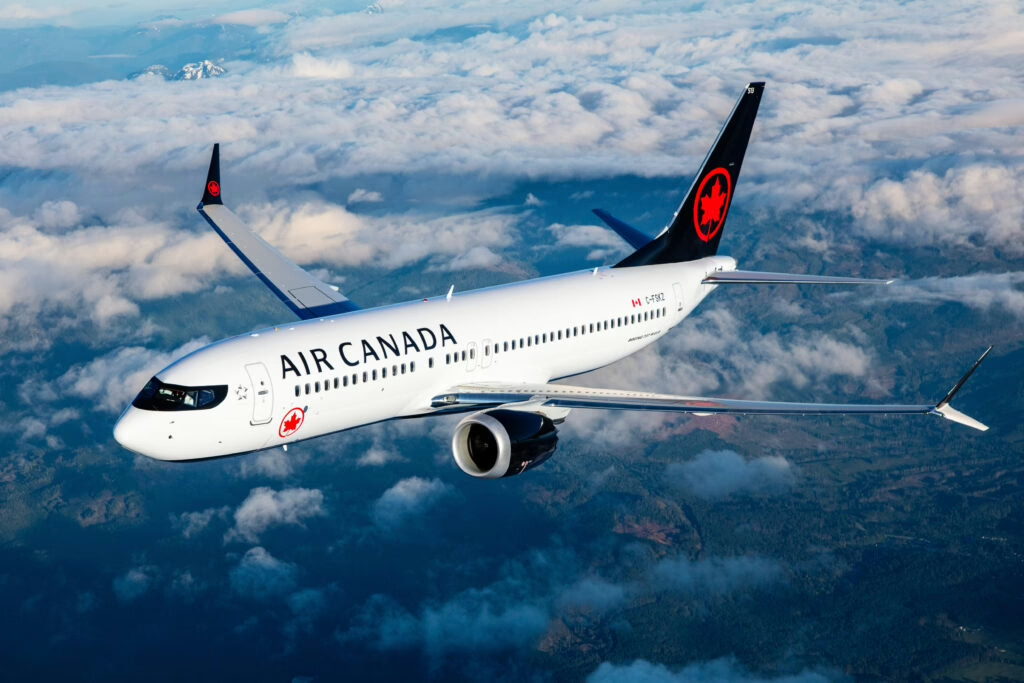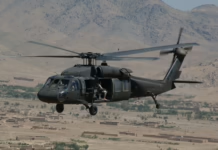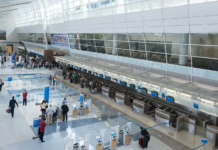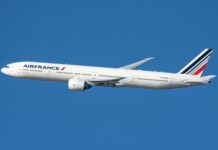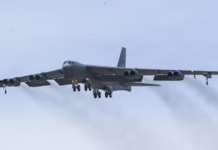Montreal carrier separates leisure and mainline operations with distinct aircraft types in major fleet realignment through 2026.
Air Canada is implementing a strategic fleet segregation plan that will transfer all its Boeing 737 Max 8 aircraft to leisure-focused subsidiary Air Canada Rouge while moving Rouge’s upgraded Airbus narrowbodies to the mainline carrier, a shift the Montreal-based airline says reflects evolving market segmentation strategies in post-pandemic aviation.
The fleet realignment, expected to continue “through 2026,” will result in Rouge operating an all-Boeing 737 Max fleet after the retirement of its aging Airbus A319 aircraft, while Air Canada’s mainline operation concentrates on Airbus narrowbodies for business-oriented routes.
Air Canada currently operates nearly 50 Boeing 737 Max 8s configured with 169 seats, according to aviation analytics firm Cirium. When transferred to Rouge, these aircraft will be reconfigured to 177 seats, including 12 business class seats, 18 preferred extra-legroom economy seats and 147 standard economy seats.
The transfer process is already underway, with 15 upgraded Airbus A321s having shifted from Rouge to Air Canada’s mainline fleet. Rouge currently operates 17 A319s, five A320s and 13 A321s, according to Cirium data.
“This programme includes an entirely new Air Canada Rouge product with cutting-edge in-flight entertainment, fast, free wi-fi and seats that recline for all customers,” said Mark Nasr, Air Canada’s chief operations officer.
The fleet transition supports Air Canada’s plan to open a new Rouge base in Vancouver, “providing more choices for leisure travellers from Western Canada,” the airline said. Air Canada did not specify an opening date for the Vancouver base.
The carrier described the initiative as its “most-comprehensive cabin renewal programme yet,” extending across Air Canada’s mainline fleet, Air Canada Express regional operations and Rouge.
All Rouge 737 Max 8s will feature in-seat entertainment and complimentary Wi-Fi for loyalty program members, representing a significant upgrade from current leisure-market standards.
Beyond the mainline-leisure fleet segregation, Air Canada is implementing cabin upgrades across its regional operations. Starting in 2026, interior retrofits will begin on Air Canada Express-branded aircraft operated by regional partner Jazz, including Embraer 175 and MHIRJ CRJ900 regional jets.
“This is in addition to the previously announced upgrades to 25 De Havilland Dash 8-400 aircraft, which will undergo a full cabin redesign to install new seating, new interiors and, on aircraft flying from Billy Bishop Toronto City Airport, next generation fast, free wi-fi,” the airline said.
Air Canada also plans to incorporate new design standards into 26 Airbus A220s on order, which will include larger overhead bins.
The fleet segmentation strategy reflects broader industry trends toward operational specialization, with airlines increasingly separating leisure and business travel operations to optimize aircraft utilization and passenger experience for distinct market segments. By concentrating specific aircraft types in dedicated operations, carriers can streamline maintenance, crew training and scheduling while tailoring cabin products to match passenger expectations in each market.
The retirement of Rouge’s A319 fleet will eliminate the oldest aircraft type from the subsidiary’s operations, while the influx of 737 Max 8s provides standardized equipment better suited to leisure markets’ demand for higher-density seating configurations and improved range performance.

Key Takeaways
- Air Canada is transferring all Boeing 737 Max 8s to Rouge subsidiary while moving upgraded Airbus A320s and A321s to mainline fleet through 2026.
- Rouge will operate an all-737 Max fleet after retiring aging A319s, with aircraft configured for 177 seats featuring in-seat entertainment and Wi-Fi.
- The carrier is opening a new Rouge base in Vancouver and implementing comprehensive cabin upgrades across mainline, regional and leisure operations.
- Fleet segmentation allows operational specialization with distinct aircraft types optimized for business versus leisure markets.



